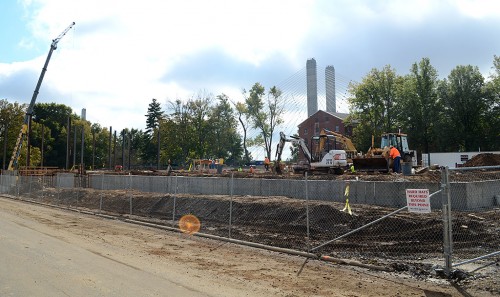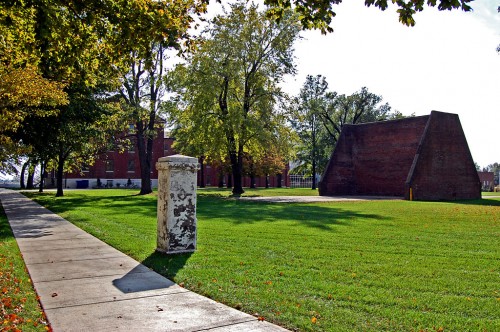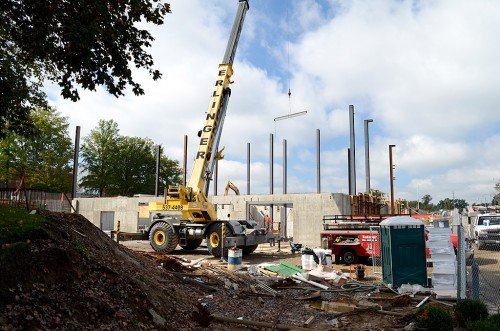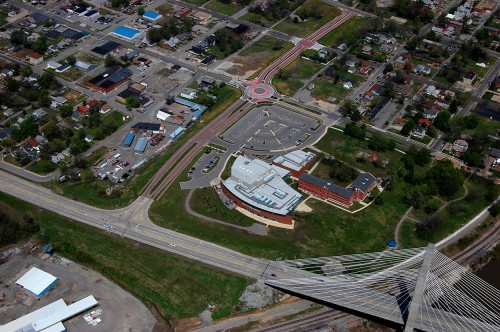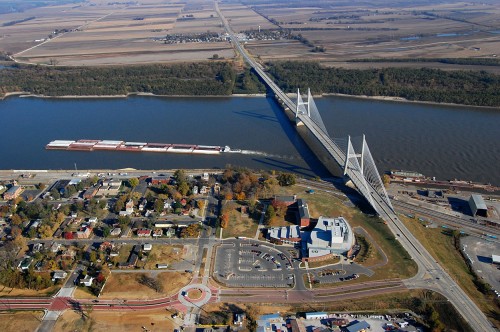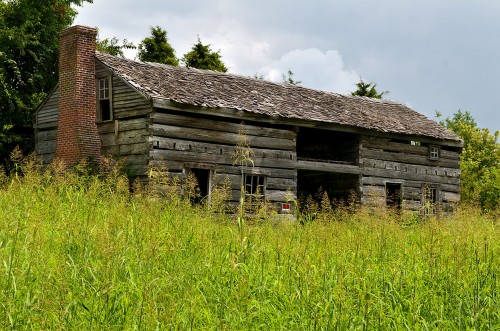 If you look off to your right on the way down the lane to the Old McKendree Chapel, you’ll see an old log cabin if the weeds aren’t too high.
If you look off to your right on the way down the lane to the Old McKendree Chapel, you’ll see an old log cabin if the weeds aren’t too high.
Sarah Stephens, wrote her thesis on Benjamin F. Hunter Log Cabin: A Social History Plan in fulfillment of the requirements for the B.S. degree in Historic Preservation in 2008. She did a great job of telling the history of the cabin, which was built outside Sikeston in the mid-1800s, taken apart in the early 1980s, then reconstructed on this site.
Rather than rehash the excellent job she did telling the history of the structure, the family who donated it, the conflicts that tore Southeast Missouri apart during the Civil War and the cabin’s eventual move, I encourage you to follow the link above. There’s something for just about anyone who is interested in the history of this region.
Think the Civil War was tough?
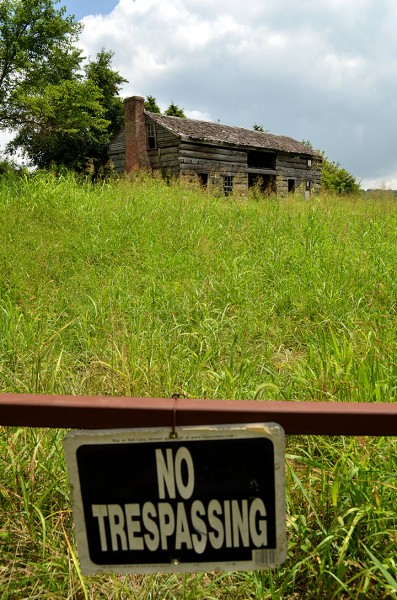 What I found as interesting as the historical notes surrounding the physical structure was the academic in-fighting that went on in determining where it was going to go. The first site was ruled out because it was going to become the Show-Me Center. The next site was ruled out when “the biology department threw a fit because that land was to be a bird sanctuary.”
What I found as interesting as the historical notes surrounding the physical structure was the academic in-fighting that went on in determining where it was going to go. The first site was ruled out because it was going to become the Show-Me Center. The next site was ruled out when “the biology department threw a fit because that land was to be a bird sanctuary.”
” Next, they went to the college farm, marked off a site just East of Old McKendree Chapel and set the stakes and flags. Someone else got upset, so they couldn’t have it there. It ended up that they could have the corner of the present site of the house.”
What’s happening now?
I usually make it out to Old McKendree Chapel at least once every visit, and I’ve noted that there hasn’t been a lot of activity at the log cabin in recent years. It looked like the place was being treated with benign neglect.
Ms. Stephens confirms that: “Interest in developing a living history farm and interest in the cabin dwindled as time went on and the work required to maintain the vision became over whelming.
In 1992 the driving force behind the effort, Dr. Arthur Mattingly, retired. Little work was done with the cabin after Mattingly left. Dr. Bonnie Stepenoff continued work on the cabin in the mid 1990s, including repairs on the roof, chinking and daubing the walls, placing a gate around the property, reglazing the windows, and conducting additional student research.
With the closing of the University Farm and the creation of a technology park in conjunction with the extension of East Main Street and a new entrance to Interstate 55 concern over the future of the cabin surfaced again. The Historic Preservation program along with the University Foundation have begun working to give the log cabin another chance. Finances remain the main issue with working with the house.
The future of the B.F. Hunter log cabin is uncertain, but with renewed interest and funding available the log cabin may be able to serve as a learning tool for preservation students and maybe one day for the community. The one lesson the B.F. Hunter log cabin has taught the University is the need to have long term goals which can be a reality.
Editor’s note: I don’t think Southeast Missouri State College has learned that lesson yet. The institution seems to be better at destroying historic landmarks than preserving them.
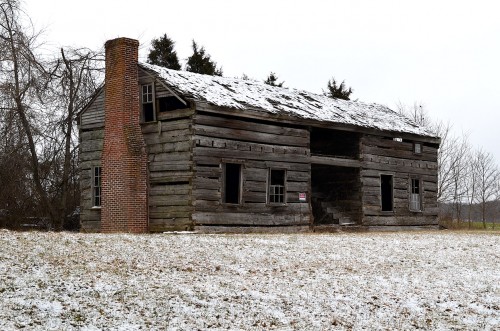 There’s quite a difference in the way the Benjamin F. Hunter Cabin looked February 9, 2016, and the way it looked when I photographed it in August 2014. Click on the photos to make them large enough to see how much the building has deteriorated in less than two years.
There’s quite a difference in the way the Benjamin F. Hunter Cabin looked February 9, 2016, and the way it looked when I photographed it in August 2014. Click on the photos to make them large enough to see how much the building has deteriorated in less than two years. I did a post December 13, 2014, that explored some of the history of the reconstructed log cabin on the road to Old McKendree Chapel.
I did a post December 13, 2014, that explored some of the history of the reconstructed log cabin on the road to Old McKendree Chapel.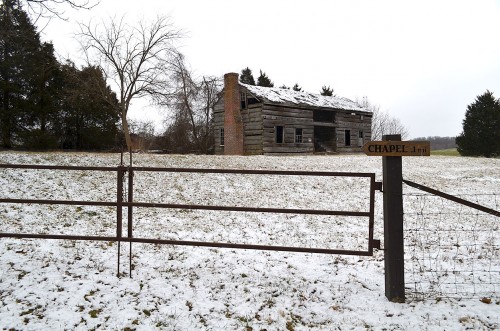 The structure, which was built outside Sikeston in the 1880s and taken apart in the 1980s, was a preservation project undertaken by Southeast Missouri State University in the 1990s. It quickly became a house without a home, with the university proposing, then discarding a number of possible locations.
The structure, which was built outside Sikeston in the 1880s and taken apart in the 1980s, was a preservation project undertaken by Southeast Missouri State University in the 1990s. It quickly became a house without a home, with the university proposing, then discarding a number of possible locations.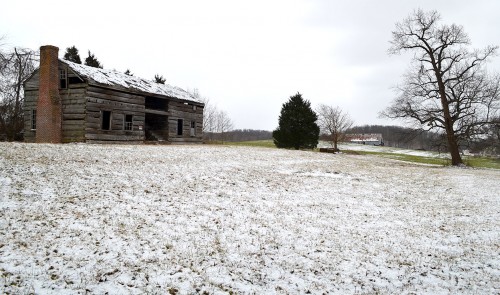 The story I did in 2014 said Dr. Bonnie Stepenoff continued work on the cabin in the mid 1990s, including repairs on the roof, chinking and daubing the walls, placing a gate around the property, reglazing the windows, and conducting additional student research.
The story I did in 2014 said Dr. Bonnie Stepenoff continued work on the cabin in the mid 1990s, including repairs on the roof, chinking and daubing the walls, placing a gate around the property, reglazing the windows, and conducting additional student research.

